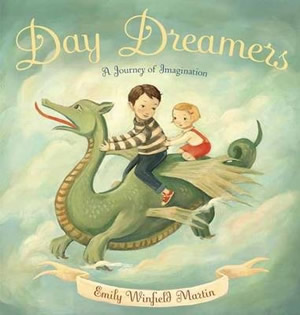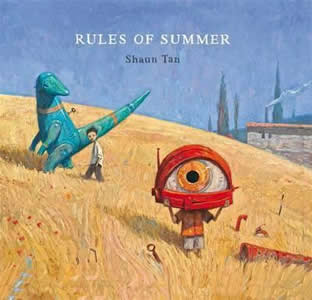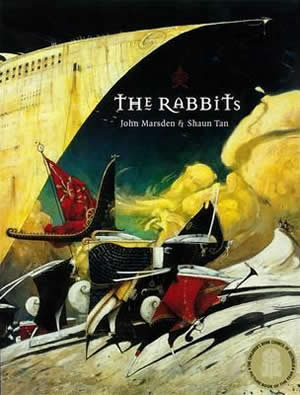Day Dreamers By Emily Winfield Martin ‘How do you find day dreams? You don’t need to search for secret doors or magic words to speak. Your imaginings will carry you anywhere you seek…’ Day Dreamers is a journey of imagination. A lovely look at the magical possibilities of the imagination in everyday situations. I think this book encourages children to use their imaginations in everyday situations, for example, imagining the sound of turning pages in a book as though it were actually the sound of griffin wings. I actually preferred her book, The Wonderful Things You Will Be to this one.
Rules of Summer By Shaun Tan, Lothian Children’s Books, 2000. ‘Never be late for a parade. Never forget the password. Never ruin a perfect plan.’ Um…not sure Shaun Tan… Your illustrations are beautiful as always, but on the first read, I didn’t understand the story. So, I thought I’d run this past a child and get a young person’s view of it. My 12-year-old niece wasn’t too sure about it either. Rules of Summer is not a book I’d personally choose in a hurry. I read somewhere that this is a story of two boys and their adventures, but I didn’t get that from the story on the first read at all. So, I read it again. On my second read of the book I saw the two boys in each picture, but the story? I think the boys have adventures and then they have a fight of some sort, before making up. Rules of Summer offers the reader a long list of rules; things you must never do. Could appeal to children, possibly boys more than girls.
The Rabbits By John Marsden and Shaun Tan, Lothian Children’s Books, 1998. ‘A rich and haunting allegory for all ages, all cultures.’ This book provides a very different perspective on the effect of humans on the environment through a clever metaphorical take on invasion. The Rabbits offers the true story of Australia’s dark history, and uses animals to describe the story. The analogy of rabbits invading the land and causing problems for the original inhabitants softens the reality of the way the situation really was. The Rabbits offers a visual feast of an intriguing, mystical and futuristic land. It is truly an illustrative masterpiece; you’ll feel like you’re in a Daliesque gallery. My 12-year-old niece wasn’t so keen on the illustrations, because she thought they weren’t easy to understand as they imitate life, but are not realistic, so to speak. She thinks it’s maybe more suitable for an older child. She wasn’t aware of the underlying message and needed it explained to her. The Rabbits could provide an opportunity for parents to explain Australia’s dark history to their children in a way that they can understand. Awards Picture Book of the Year, Children’s Book Council of Australia, 1999. Aurealis Conveners’…
Where The Wild Things Are By Maurice Sendak, first published by Harper and Row, 1963. But the wild things cried, “Oh please don’t go – we’ll eat you up – we love you so!” This is an all-time classic and special favourite of mine. Where The Wild Things Are, goes down in history as one of the greatest books written for children. I love this book! We follow Max on a journey of adventure and intrigue, where he learns to look his fears in eye, stand up for himself and conquer his fears. Your child’s imagination will expand with Max’s. The Where the Wild Things Are book is an absolute must for your bookshelf! Special note: My 12-year-old niece thinks this book would be more appealing to boys than girls. Awards Winner: Caldecott Medal, Most Distinguished Picture book of the Year, 1964. Where The Wild Things Are Toys Extend the hours of enjoyment you child will have with this book by supporting it with dress up costumes and toys. If your child loves Max, there are Max plush toys, or if your child prefers the monsters, there are many of those as well. Having a Where The Wild Things Are…





